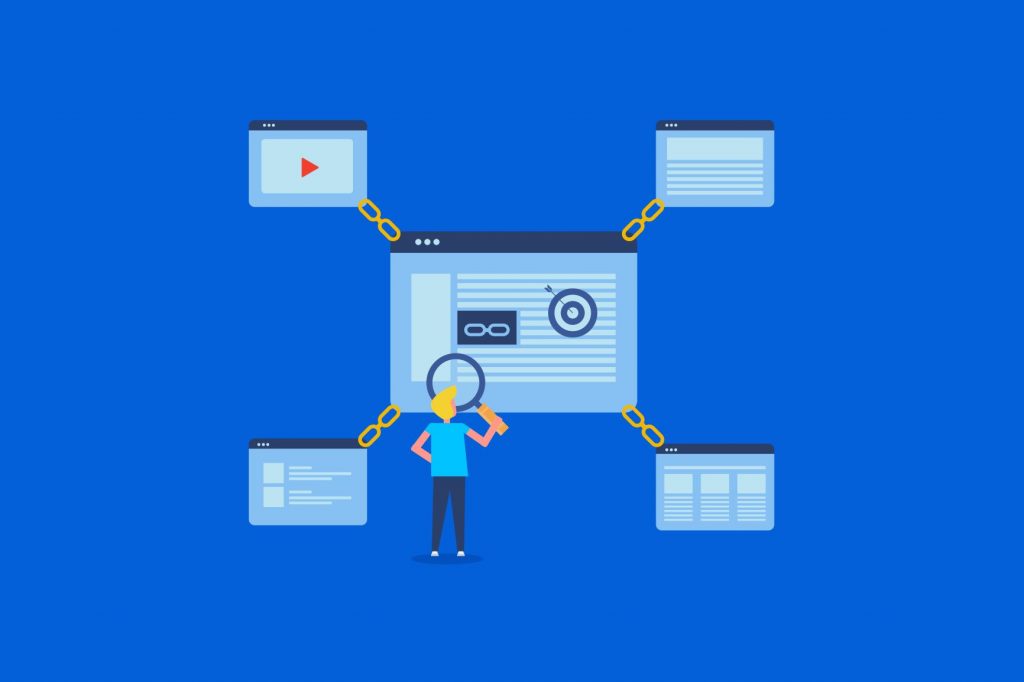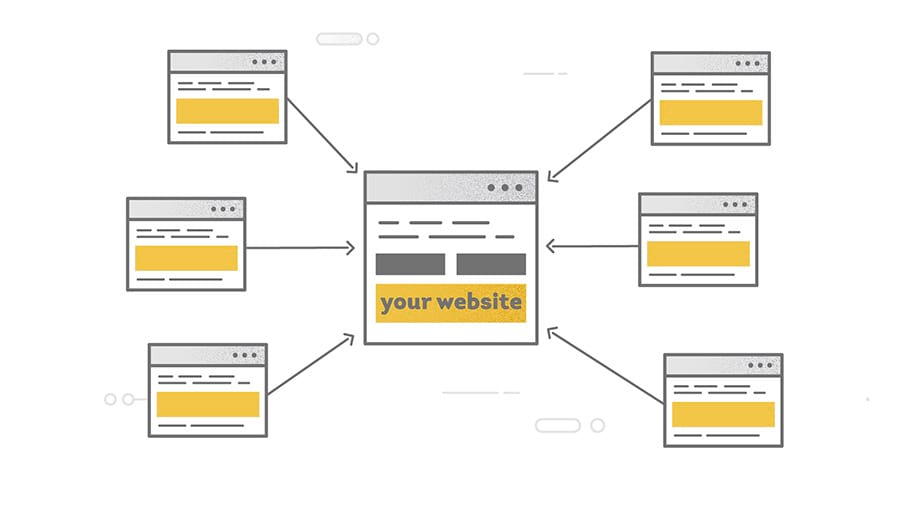Every business must invest in a website since it serves as a digital storefront for their products and services. However, unlike a physical shop, you need to work double-time to make your domain visible to your target audience.
Fortunately, you can maximize digital marketing techniques to boost the online presence of your brand. Search engine optimization (SEO), in particular, is a valuable tool for this specific purpose. It involves enhancing the elements of your website to ensure that potential customers are aware that you offer solutions to their everyday woes.
What Is Link Building?

Search engines, like Google and Bing, scour millions of webpages on the World Wide Web through links. They crawl within internal links, as well as between websites. This process helps them extract content from these pages and incorporate it into their indexes.
Moreover, these platforms also use links to determine the quality of a page’s content. While it’s not the only ranking factor utilized by search engines, it still plays a significant role in the position of your website in the search engine results pages (SERPs).
Specifically, Google and Bing look at your site’s backlinks. These hyperlinks come from external websites that direct traffic to your domain. Link building is an SEO tactic that entails the acquisition of this type of link from other blogs. Think of backlinks, also known as inbound links, as a vote of confidence for your content. Search engines run under the premise that your website is a credible source of information if many sites refer to it when creating their own articles.
On the human user’s end, they have three ways to navigate a particular page. They can either bookmark a website or type the entire URL in the browser. While these are relatively doable, they become impractical in the long run since web visitors will need to memorize or bookmark hundreds of URLs. The third approach, which entails clicking on links found in web pages, is the most convenient, which makes them integral in the online search process.
Benefits Of Acquiring Backlinks

While nobody knows exactly how search engines calculate their metrics, backlinks continue to be one of the most crucial SEO ranking factors used by Google today. You should have a solid link building campaign in place if you want your website to be visible to your target audience.
Here are some benefits of acquiring backlinks:
- Boosts Site Traffic
The primary advantage of investing time and resources in link building is that it can significantly increase the number of people who visit your website. The steady stream of traffic that you garner daily or monthly is the web users who are most likely to convert into leads and, ultimately, paying customers.
Business and digital marketing is still a numbers game. You increase the chance of boosting sales when you make your site visible to your target demographic, which you can achieve through link building.
- Improves Your Ranking
As mentioned above, search engines use backlinks to determine the quality of your content. You’re more likely to reach the top spots in the SERPs for relevant keywords if you’ve acquired many links from high-authority websites.
Again, you should still prioritize establishing connections with authority domains in your industry. These sites can pass on more link juice because they’ve built their credibility as leaders in their respective niches.
You should also be careful about getting backlinks haphazardly. This can backfire and damage your reputation, especially if your domain becomes associated with questionable websites.
- Builds Your Credibility
Link building helps in improving consumers’ perception of your brand as well. Since backlinks are considered as votes of confidence for your content, getting these from trusted sources can boost your credibility among your target audience.
Establishing your reputation is challenging, especially if your brand is still new to the industry, unlike a franchise, wherein the founder has already built a following. Startups and small businesses have to work twice as hard to stand out from their competitors.
When you successfully acquire backlinks from authority sites, web visitors can associate their trustworthiness with you. Moving up Google’s SERPs is one of the best methods to gain trust in your website. With this, you can slowly carve a place for yourself in your niche and, eventually, cement your position as an industry leader.
- Introduces Your Brand To A New Audience
Having your links published on high-quality websites promotes your brand to the referring domains’ reader base. So, if you focus on building relationships with authority figures in your industry and acquiring backlinks successfully, you can introduce your company to more and more prospects. Even if they don’t purchase your products and services right away, you can keep on marketing to them, especially if they subscribe to your website as well.
Factors That Affect A Link’s Weight
Not all links are the same. You have to check the backlink source and evaluate whether it can pass on valuable link juice or damage your ranking.
These are the factors that affect a link’s effectiveness:
- Referring Domain’s Authority
Again, the source of your backlink plays a major role in the weight that will be passed onto your site. For instance, a link from a news publication, like CNN, would be more advantageous for your brand than a mention from a blogger without inbound links.
Some tools provide data on the domain’s overall authority rating, as well as for each of its web pages. Use this information to determine which sources you should prioritize so that you can get the most out of your link building efforts.
- Rel Attribute
The HTML tag that’s attached to your link also influences how much link juice it passes to your domain. Initially, there were only two rel attributes associated with links: dofollow and nofollow. The former was more valuable as this was the type that’s considered as a vote of quality. Meanwhile, the latter informed Google and Bing not to pass any PageRank to the website. It wasn’t used for crawling and indexing. Moreover, it also didn’t have any influence on a site’s rank.
Last year, however, Google rolled out an update for the nofollow rel attribute. Now, you can use three types of tags. Rel=”sponsored” is used to specify that a link is paid or sponsored by another website. Rel=”ugc” signals to search engine crawlers that the link comes from a user-generated content. Lastly, rel=”nofollow” serves as a catch-all for non-trusted links, such as those that come from the comments section.
Google also changed how it processes these attributes. Now, the search engine considers them as hints for crawling, indexing, and even ranking. This means that there’s a possibility that a sponsored or UGC link can pass on link juice to your domain. Of course, no one really knows when this happens since Google is very secretive about their metrics, but the good news is that your link building efforts wouldn’t be in vain even if the referring domain tags it as nofollow.
Nonetheless, this attribute can still provide value to your domain because it can improve people’s perception of your brand. So, as long as you get backlinks from high-quality sources, you can establish your reputation as a company that they should notice.
- Link Location
Aside from getting a dofollow tag for your backlink, another factor that you should consider is its location on the referring page. A link located in the content’s body passes more link juice compared to the one that’s placed at the sidebar or footer.
The premise behind this phenomenon is that the in-content link would be more likely to garner clicks. Even so, you can still benefit from backlinks on the outskirts of the page, albeit giving your website lesser link juice.
- Anchor Text
The anchor text pertains to the words where the link is attached. It’s typically formatted in blue and is clickable. Search engines also deem the anchor text as a factor that signals the weight of a backlink.
Google and Bing prioritize delivering the best results to web users. Besides the content, their algorithms also look at the context of the anchor text and its surrounding words. For instance, if you’re promoting a page about the best shoes for nurses, your site might rank better if you garner backlinks with an exact or partial match anchor text.
- Relevance
This factor still revolves around context. The linking page and anchor text should match or, at the very least, make sense in terms of usage. Additionally, the surrounding outbound links must also be, in some way, related to each other.
Going back to the earlier example of best shoes for nurses, this link would seem like a fish out of water if you place it in an article that talks about cryptocurrency. It would make more sense to place it in a blog post about women’s apparel or health.
Link Building Strategies For Success
Now that you have an idea about link building, its benefits, and the factors that comprise a successful backlink, it’s time to create your own campaign. Here are a few tried-and-tested link building strategies that you can use to boost your SEO:
- Produce Awesome Content Regularly
Don’t resort to spammy backlinking strategies.
As stated earlier, Google’s and Bing’s top priority is to provide web users with the best results. With this in mind, you should make sure to write for human readers first before focusing on the more technical aspects of SEO.
Content remains to be king in the digital sphere. With more and more websites being created daily, you need to level up your content creation and set high editorial standards. This way, not only will you capture the attention of your target audience, but you’ll also retain their interest since you provide them with valuable information consistently.
Some ways to churn out backlink-worthy content include:
- Publishing Original Research – Something as simple as surveying your current subscriber base can provide you with insight into the needs and preferences of consumers in your industry. Share this information with other sites in your niche and earn high-quality backlinks along the way.
- Conducting Interviews – Similar to research, organizing interviews can also aid your link building efforts by being a first-hand source of professional opinion. You can talk to experts in your niche about anything related to your niche.
- Producing Informative And Engaging Media – Creating infographics and videos is an effective way of getting backlinks. These media can easily catch the attention of your target audience. Plus, they’re highly-shareable, which makes the link building process more straightforward.
- Form Relationships With Blogs In Your Niche
More than just asking for backlinks, you should focus instead on forming relationships with people in your industry. Participate in relevant online communities so that you can find like-minded business owners and site administrators. This way, you’re not just getting a backlink opportunity once, but a regular source.
- Find Backlink Opportunities From Broken Pages
Another way to acquire links for your site is to scour the web for broken pages. These are web pages that return an error. They’re typically caused by page or domain transfers and leave the referring website with a relatively useless anchor text.
Once you have a list of websites in your niche that have missing pages, you should take a look at the content that you’ve already published and see if you can offer a replacement for the broken links. Most of the time, site administrators are willing to edit their content to ensure that the links direct web users to working pages.
- Look For Unlinked Brand Mentions
Often, people may mention your company name on their blogs without attaching a link to your website. You can take advantage of this situation by reaching out to the web user and asking them if they can publish your backlink.
Conclusion
Link building is a valuable SEO tool that can help boost your website’s online presence. It allows you to reach your target audience by positioning your site at the top of the SERPs for relevant keywords. Consequently, it can boost your credibility and allow you to position yourself as a leader in your industry.
